Did you know improper tree cutting causes over $1 billion in property damage and countless injuries every year? Whether you’re eyeing a stubborn oak in your backyard or planning full-scale tree removal, a single mistake could cost you dearly. This comprehensive guide will not only spare you expensive blunders but also help you work efficiently, safely, and with confidence—in your own yard or by choosing the right professionals for the job.
- What You Will Gain from Mastering Tree Cutting:
- Learn proven tree felling techniques for safety and efficiency.
- Understand the role of certified arborists in tree removal tasks.
- Discover how proper equipment and methods can save you thousands.
- Gain tips to mitigate risks and avoid legal, environmental, and property damages.
Tree Cutting: Surprising Facts and Costly Errors You Can Avoid
- Every year, over 36,000 chainsaw injuries are treated in U.S. emergency rooms—most from DIY tree felling projects gone wrong.
- One local homeowner spent $10,000 repairing their neighbor’s fence after a miscalculated cut toppled a maple the wrong way. Another faced a $5,000 fine for removing a protected tree without a permit.
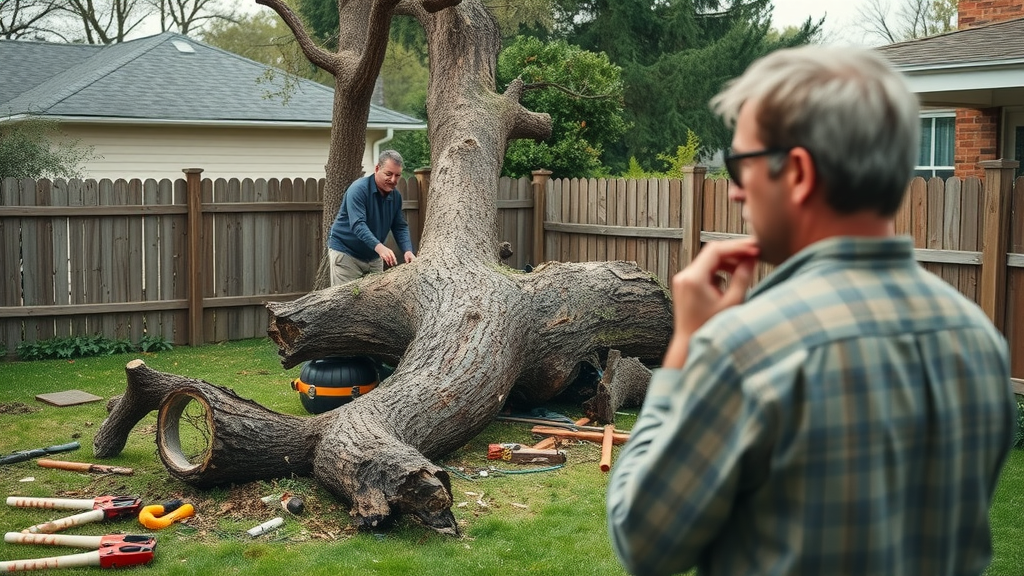
These incidents highlight why mastering best practices in tree cutting is crucial—not just for your safety and your property, but for your budget. Without the right techniques and preparation, simple jobs can spin out of control fast and become frighteningly expensive learning experiences.
Understanding Tree Cutting: Key Terms, Processes, and Legal Considerations
Differentiating Tree Cutting, Tree Felling, and Tree Removal
- Tree cutting refers to removing some or all parts of a tree, commonly branches or limbs.
- Tree felling is the controlled process of bringing a standing tree to the ground safely and in a specific direction by utilizing precise face cuts, felling wedges, and felling cuts.
- Tree removal encompasses both felling and the thorough elimination of the tree’s stump and root system.
Understanding these distinctions is critical; tree felling involves specialized cuts and planning to prevent falling tree accidents, while tree removal often includes debris management and stump grinding. Each stage carries unique risks and safety protocols. Felling a tree with improper technique or tools can result in life-threatening mistakes, whereas paying attention to the entire tree removal process ensures fewer hazards and a cleaner end result.
Regulations and Permits: What You Need to Know Before Tree Felling
- Most municipalities require permits for tree cutting , especially for larger trees, protected species, or those near utilities and property lines.
- Consult your local government ( gov website or district office ) for guidelines, which frequently protect heritage trees and mandate notice to neighbors or inspections by a certified arborist .
- Failure to obtain permits can stall projects or even result in steep fines and costly legal issues, especially if you accidentally fell a tree in protected wet areas or along sides of streams .
‘Neglecting local regulations in tree cutting can lead to hefty fines or legal battles.’ – Certified Arborist
Always check zoning laws and city ordinances to avoid serious consequences. If unsure, reach out to an ISA certified arborist or check your local gov website before starting any tree felling or removal.
For those looking to maintain healthy trees year-round and avoid common pitfalls, exploring practical advice on tree cutting and garden tree care can provide additional insights into safe and effective maintenance practices.
The Hidden Costs of Tree Cutting and Tree Removal
Why Professional Tree Felling Appears Expensive
While DIY tree cutting may appear cost-effective, the price of professional tree removal reflects insurance, certified training, safety gear, and equipment costs—all of which significantly reduce risk. Professionals use advanced chainsaws, certified personal protective equipment , and insured crews to ensure tree safe operations, preventing property or personal injury. What initially looks like an expensive upfront fee is typically a safeguard against even costlier damage or injury.
Experts also provide thorough site assessment, calculate tree lean , anticipate wind direction, and employ proper face cuts , felling cuts , and felling wedges . Doing this job yourself without these skills can spiral into significant unforeseen costs—damaged utilities, landscaping, or even neighbor disputes.
| Service Type | Average Cost | Included | Pros | Cons/Risks |
|---|---|---|---|---|
| DIY Tree Cutting | $100–$600 (tools & waste disposal) | Chainsaw rental, safety gear (optional), your labor | Lower upfront cost, immediate scheduling | High injury risk, no insurance, potential property damage, permit violations |
| Professional Tree Removal | $400–$2,000+ (per tree) | Certified crew, heavy-duty equipment, full liability insurance, clean-up, stump removal options | Safety, legal compliance, efficient, less risk | Higher upfront cost |
| Hybrid (You cut, pro hauls) | $200–$900 | DIY felling, professional clean-up/removal | Flexibility, moderate cost savings | Still some risk, limited support for errors |
How Much Should Tree Cutting Cost?
- Typical national average: $400–$1,200 per tree. Costs vary by region; large or risky jobs can reach $2,500 or more.
- Factors: tree height, species, access for equipment, proximity to buildings/power lines, and disposal needs. Pine tree removal may cost less than large hardwoods like oak or walnut .
- Accessibility and need for cranes or bucket trucks, urban vs. rural, and local disposal fees can quickly add to final price estimates.

‘Hiring experts isn’t just about avoiding mistakes, it’s about long-term value and peace of mind.’
Getting several estimates and asking for itemized quotes will help you understand exactly where your money goes and avoid unexpected add-ons.
Selecting Certified Arborists: Ensuring Safe and Effective Tree Cutting
The Importance of Certified Arborists in Tree Removal
- Look for ISA certified arborists or those with regional regulatory credentials. Certified arborists possess advanced knowledge in tree care , risk assessment, controlled tree felling , and disease diagnosis.
- Certification ensures a commitment to safety (using proper chain brake techniques, wearing personal protective equipment ), environmental preservation, and legal compliance. They’re trained to mitigate risks, avoiding unnecessary tree loss or property damage.
Experienced certified arborists also carry liability insurance—a must for protecting you from costly mistakes. Before hiring, always request to see credentials and proof of insurance to ensure your tree removal is handled professionally.
How to Get Trees Cut Down for Free
- Research local government programs , utility companies, or conservation agencies. Sometimes they will remove hazardous trees threatening power lines at no cost.
- Connect with logging companies, local sawmills, or wood exchanges. You may receive tree removal services in exchange for firewood, lumber, or allowing community projects access to the wood.
- Often, eligibility is limited by the species and condition of the tree—dying, dead, or invasive trees are prioritized.
‘An uninsured contractor can leave you paying for their mistakes.’
Always clarify terms and get agreements in writing to avoid misunderstandings over wood rights or future clean-up.
Essential Tree Cutting Techniques for Every Homeowner
Best Practices for a Safe Face Cut and Felling Cut
- The face cut is a notch made on the fall side of the tree, guiding the direction of the fall. The felling cut is made from the opposite side, slightly above the base of the face cut, allowing the tree to fall safely and predictably.
- Use felling wedges to keep the saw kerf open and control the lean, reducing risk of pinching the chainsaw bar or uncontrolled splitting as you finish the cut.
- Proper diagrams and step-by-step plans ensure you align these cuts for optimal tree safely and efficiency, especially with large or leaning trees.
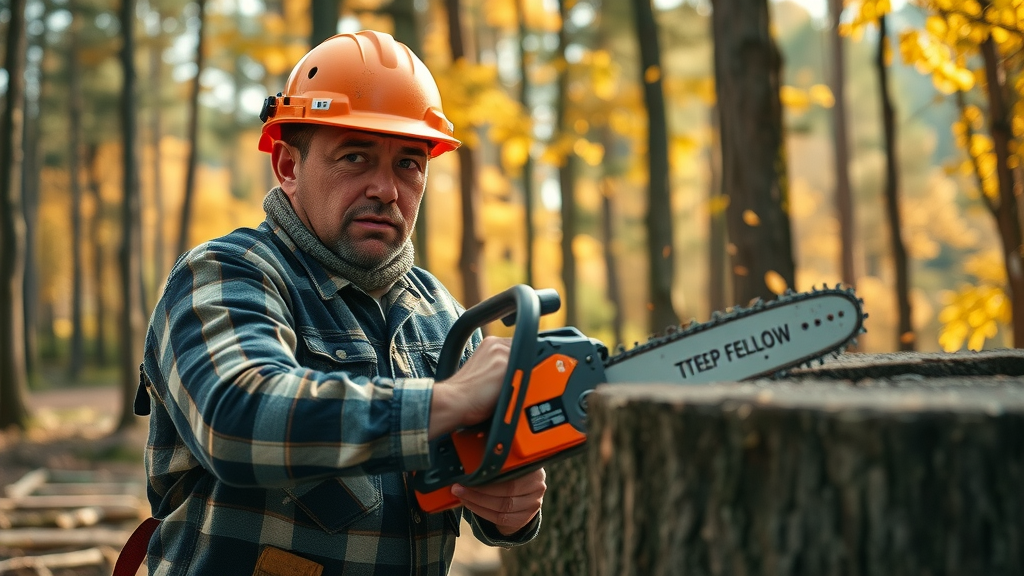
Critical Safety Equipment: Chain Brake and Personal Protective Gear
- Must-have PPE includes: helmet with face shield, hearing protection, cut-resistant gloves, chainsaw chaps , steel-toe boots, and eye/ear protection.
- The chain brake is a safety feature on all modern chainsaws—engaged by hand or inertia, it instantly stops the running chain after kickback , preventing serious injury.
- Regular PPE checks and chain brake functionality tests are vital for every shift or job.
Never forgo this gear or the chain brake—it’s your first line of defense against the most common and severe tree cutting injuries.
Step-by-Step Guide: Proper Technique for Tree Cutting
- Assess the site and plan escape routes —Inspect surroundings for people, pets, vehicles, and hazards like power lines or wet areas. Plan at least two clear escape paths at a 45-degree angle from the intended fall line.
- Select the right tools and inspect the tree —Check chainsaw condition (chain sharpness, chain brake), fuel, and required PPE. Inspect the tree for disease, rot, or split trunks that could cause unpredictable breaks.
- Make accurate face cuts and felling cuts —Start with a horizontal face cut on the fall side, followed by a downward cut to form a notch. Then, perform the felling cut from the opposite side, slightly above the base of the face cut, ensuring the saw’s bar tip avoids pinch points.
- Apply felling wedges —Insert wedges as you saw to keep the kerf open and guide the fall, maintaining full control over direction. Always finish the cut with the utmost caution, staying alert to movement.
- Buck logs and clean-up safely —Once the tree is down, segment it carefully (bucking logs), maintaining steady footing and awareness. Move your tree sections and debris well clear of the site, separating logs or firewood for reuse or disposal.
Common Pitfalls and Mistakes to Avoid
- Inadequate site assessment—Failing to identify hazards like power lines, wet areas, or sloped terrain increases the risk of injury or property damage.
- Bypassing safety gear—Skipping personal protective equipment can turn minor mishaps into serious injuries.
- Misjudging tree lean or height—Leads to the falling tree landing on property, wires, or neighboring yards.
Investing time in proper preparation, safety gear, and learning correct cutting techniques—especially regarding face cuts , felling cuts , and using a chain brake —essentially pays for itself by keeping your tree cutting safely and efficiently on course.
Tree Care After Tree Cutting: From Bucking Logs to Stump Removal
Guidelines for Proper Bucking Logs
- Always work from the top of the log, maintaining a solid stance. Evaluate log tension (compression vs. tension wood) and start cutting from the compressed side to reduce binding or kickback.
- Use the full length of the chainsaw bar for stable, straight cuts, keeping hands and fingers well clear of the blade. Clear branches as needed for safer movement and footing.
- Never cut logs or firewood near unstable ground or in wet areas—these increase fall and slip hazards.
Careful bucking of logs keeps the site organized, speeds up clean-up, and safeguards against further injuries.
Managing Stumps, Debris, and Recycling
- Stump grinding is the most efficient way to remove the base of a tree, using specialized equipment to shred down to below soil level. This allows quick lawn restoration and prevents regrowth.
- Full stump removal (digging out the entire mass) is more labor-intensive but may be necessary for construction or landscaping projects.
- Sort debris into logs, mulch, and firewood. Many municipalities offer recycling programs or wood chip pick-up, promoting sustainability after tree removal .
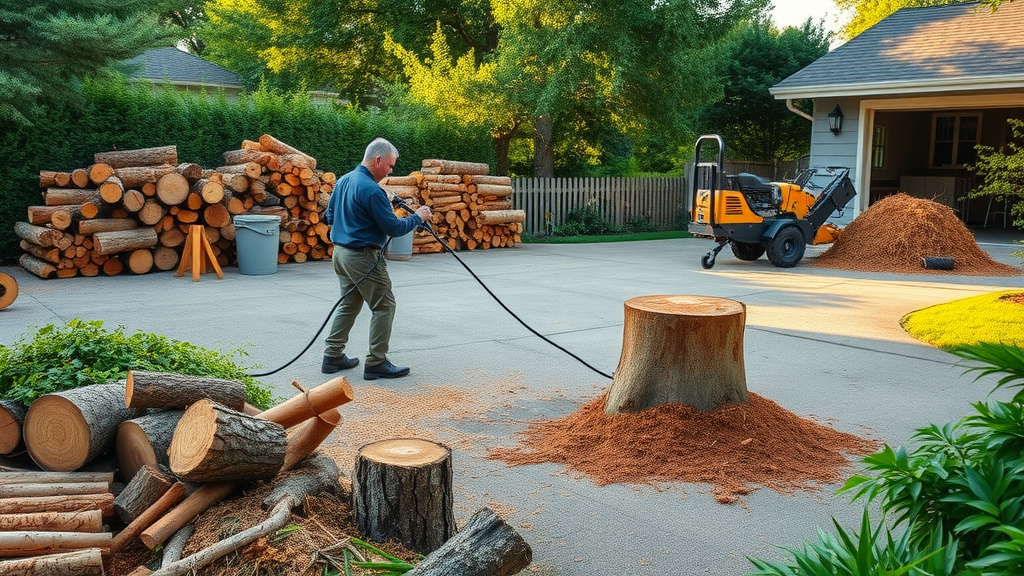
Personal Protective Equipment: Your First Line of Defense in Tree Cutting
- Essentials include: helmet with visor, cut-resistant gloves, chainsaw chaps , steel-toed boots, eye/ear protection, sturdy workwear, and a high-visibility vest.

Personal protective equipment greatly reduces accidents caused by chainsaw kickback, falling branches, and flying wood chips. Always confirm each piece is rated for chainsaw use before starting any tree felling or tree removal job.
How to Choose and Maintain Your Protective Gear
- Inspect helmets and face shields for cracks, clouding, or worn straps every time you start a new job.
- Wash or shake out gloves and chaps, checking seams for wear or tears. Replace chaps if any chain contact occurs—even a minor nick can compromise their integrity.
- Clean goggles and earmuffs between uses and replace them if visibility or hearing protection is reduced.
- Refer to the manufacturer’s checklist for each item to ensure you are fully protected from the top down.
Staying vigilant with safety gear and maintenance not only keeps you safe but extends the life of your investment, letting you tree safely and efficiently for years to come.
Seasonal and Specialized Tree Cutting: Christmas Tree Felling and Unique Considerations
Tree Cutting for Christmas Trees vs. Mature Trees
- Cutting a Christmas tree is a joyful tradition, but even saplings require careful technique. Use small hand saws, approach on clear, level ground, and protect the trunk base for clean regrowth if harvesting sustainably.
- Mature tree felling involves assessing height, weight, and potential hazards, as well as full PPE and advanced cuts for safe direction and controlled fall.
- Regardless of the tree’s size, never underestimate risks—children and bystanders should always stay well clear during cutting, even with seasonal, festive projects.

Environmental and Community Impact of Tree Felling
- Engage in sustainable practices by planting two trees for every one removed, utilizing local recycling programs for mulch or lumber, and participating in habitat restoration projects.
- Contact your local district office or conservation group for community tree replanting initiatives after major tree removal projects—many towns offset lost canopy with grants for tree care.
Responsible tree cutting preserves ecosystem balance and bolsters your neighborhood’s green spaces, making you a better steward of your property and community.
People Also Ask – Tree Cutting’s Most Critical Questions
How much should tree cutting cost?
- National averages range from $400 to $1,200 per tree, depending on size, access, species, and debris disposal. Larger trees and complex jobs (such as near power lines or in dense neighborhoods) can cost upwards of $2,500.
- Factors like crane rental, stump removal, distance from street, and local disposal fees all impact final pricing—always ask for detailed written estimates.
How to get trees cut down for free?
- Contact your utility company if trees are interfering with lines; these are often removed at no cost. Some local governments or conservation agencies also sponsor hazardous tree removal programs.
- Participate in trade or lumber programs—companies may remove trees in exchange for wood, or you can donate timber to community initiatives.
What is the proper technique for tree cutting?
- Begin with a controlled face cut on the intended fall side, followed by a felling cut from the opposite side. Use felling wedges to maintain open kerf and direct the fall.
- Always wear complete personal protective equipment , plan site escape routes, and avoid the chainsaw bar tip to prevent kickback. Maintain strong footing and awareness throughout the process.
Why is cutting trees so expensive?
- Tree cutting involves significant hazards: labor costs, insurance, heavy machinery, legal permitting, and the expertise needed to avoid property or personal injury. All these factors are built into the professional fee.
- Attempting DIY tree felling without this infrastructure often results in greater cost through damages or regulatory penalties.
Expert Insights into Efficient and Safe Tree Cutting
‘A single mistake in tree felling can result in costly property damage or injury—preparation is everything.’ – Tree Felling Specialist
- Hire ISA certified arborists for large or tricky jobs.
- Always check your PPE before each use—replace worn-out items promptly.
- Review your city’s tree cutting guidelines before beginning any project.
- Plan escape routes and clear debris before cutting.
- Never work alone when tree felling—have a spotter nearby with a clear line of sight and communication.
- Inspect trees for disease, rot, or wildlife before starting any cuts.
- Sharpen chainsaw blades and test chain brakes every use.
- Use felling wedges to control fall direction and minimize saw pinching.
- Avoid tree cutting during high wind, heavy precipitation, or on steep, wet areas.
- Dispose of debris sustainably—recycle, mulch, or donate wood instead of burning.
Frequently Asked Questions about Tree Cutting, Tree Felling, and Tree Removal
- When is the best time for tree cutting? Late winter to early spring is ideal; trees are dormant and easier to assess for safety and disease.
- Which tools do I need for safe tree cutting? A chainsaw with active chain brake, felling wedges, a sturdy ladder, and full personal protective equipment are required for most jobs.
- Do I need a permit? Often yes—check your local gov website or district office for requirements, particularly for large or protected trees.
- Is it safer to hire a professional? Yes, especially for large, leaning, or hazardous trees—certified arborists have the equipment, insurance, and expertise for safe removal.
- How do I handle stump removal? Rent a stump grinder, hire a pro, or research eco-friendly chemical solutions; always follow strict safety guidelines.
- What are major DIY risks? Kickback, misjudged tree lean, missed safety gear, and improper cuts are leading causes of severe injury or damage.
Avoiding Costly Mistakes in Tree Cutting: Key Takeaways
- Always use proper PPE and verify the chain brake before starting any tree cutting job.
- Understand the tree species, size, and local legal requirements to minimize risk.
- Choose certified arborists for risky or large tree removal, and never cut corners with safety protocols or equipment.
Ready to Cut with Confidence? Take Action for Safe and Smart Tree Cutting
- Download our free tree cutting safety checklist to ensure you don’t miss a step.
- Consult with a local certified arborist for tricky jobs or permit needs.
- Share your tree felling stories and tips in the comments to help others learn and prosper in their next tree cutting project!
If you’re eager to deepen your understanding of tree care and stay updated on the latest industry trends, expert interviews, and innovative techniques, consider tuning in to the Tree Guardian News Podcasts . These episodes offer a broader perspective on arboriculture, sustainable practices, and real-world stories from professionals, helping you make smarter decisions for your property and community. Whether you’re a homeowner or a tree care enthusiast, expanding your knowledge through these resources can empower you to approach every tree cutting project with greater confidence and foresight. Take the next step and discover how ongoing education can transform your approach to tree safety and maintenance.
To enhance your understanding of safe and efficient tree cutting practices, consider exploring the following resources:
- “Tree Trimming Safety Tips”
This article provides essential safety guidelines for tree trimming, including equipment inspection, proper techniques, and ladder safety. ( driscolltreeservice.com )
- “Tree Removal Safety: Precautions and Pro Tips To Prevent Accidents”
This guide offers comprehensive safety measures and professional tips to prevent accidents during tree removal, emphasizing the importance of establishing safety zones and following proper cutting techniques. ( smarttreeremovalbrisbane.com.au )
By consulting these resources, you can gain valuable insights into best practices for tree cutting, helping you avoid costly mistakes and ensure safety during your projects.
 Add Row
Add Row  Add
Add 

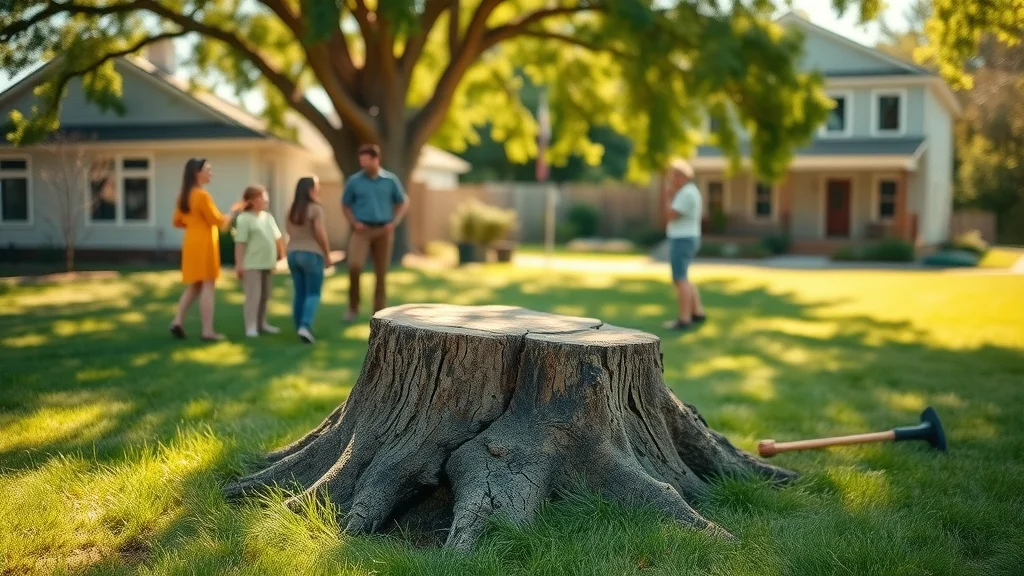

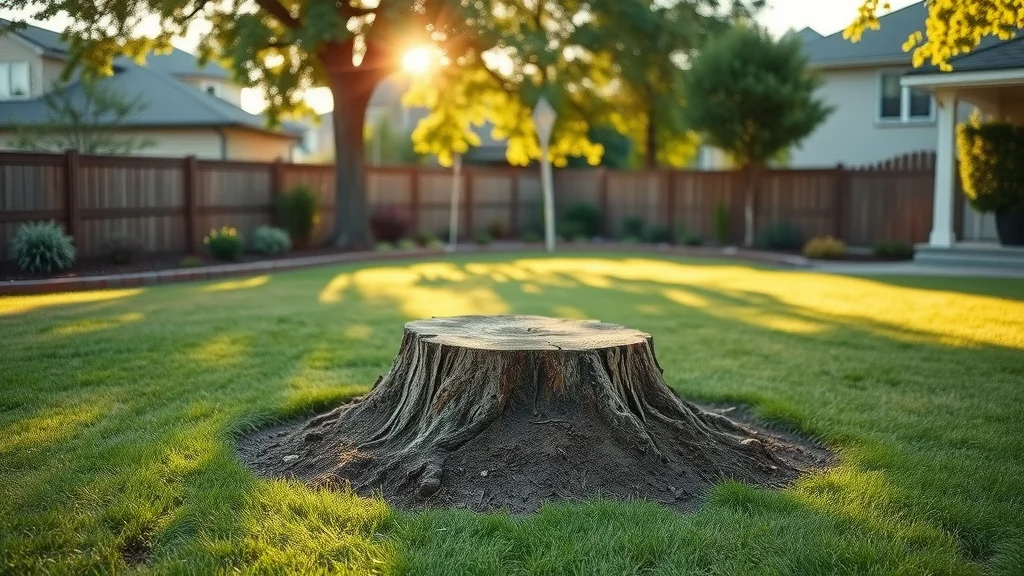
Write A Comment